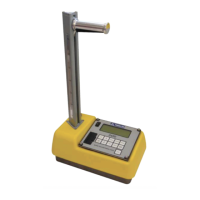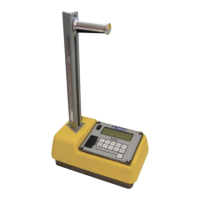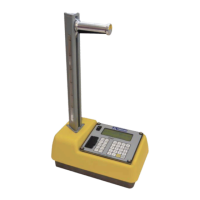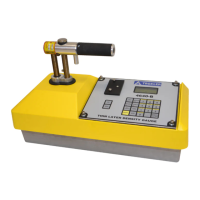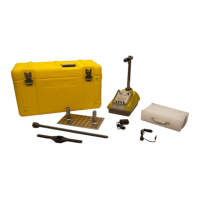Model 3440 D-5
R
R
a
a
d
d
i
i
a
a
t
t
i
i
o
o
n
n
S
S
a
a
f
f
e
e
t
t
y
y
This section discusses the principles of general radiation safety.
This information includes specific procedures for operating,
inspecting, cleaning, and leak testing the gauge to ensure safe
operation.
Radiation Dose
Radiation cannot be detected by any of the human senses (sight,
touch, hearing, smell). However, using appropriate instruments
and devices, radiation can be detected and measured at levels
far below those that significantly affect health.
For purposes of radiation protection, the basic unit of radiation
dose is the rem. The SI unit is the sievert (Sv), where 1 Sv = 100
rem. The rem is a relatively large unit, so often radiation dose is
expressed in smaller units called millirem (mrem), where 1 rem
= 1000 mrem.
The risk of injury from radiation is generally related to the total
radiation dose received over a period of time. It is also related to
the dose rate, which is the amount of dose received per unit
time. The same amount of radiation received over a long period
(months to years) is much less hazardous than if received over a
very short period (hours). This has to do with the body’s ability
to repair cell damage caused by the radiation.
The U.S. Nuclear Regulatory Commission (NRC) has established
the following limits on the amount of whole body radiation
exposure that individuals may safely receive from licensed
radioactive materials.
Minor (under 18 years old)
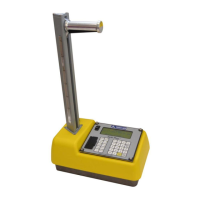
